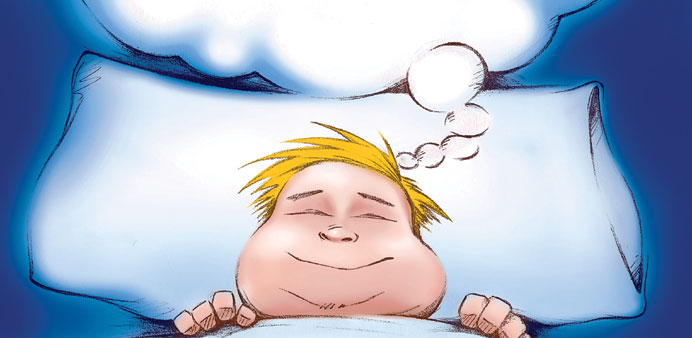Japanese researchers have taken an early step toward this chimerical goal by training computers to recognise the images flitting through the minds of sleepers. By Geoffrey Mohan
|
|
Dreams defy even the dreamer, slipping away as stealthily as they arrive in a mind made credulous by sleep. But what if scientists could read our dreams by using the most advanced medical imaging machines and employing the sophisticated algorithms that flag fraudulent transactions among millions of credit card purchases?
Researchers in Japan have taken an early step toward this chimerical goal by training computers to recognise the images flitting through the minds of sleepers in the earliest stages of dreaming. Their results, published online recently by the journal Science, suggest that machines may be able to read our minds — at least while we’re in the anteroom of dreamland.
“We’re all intrinsically interested in dreaming, but neuroscientists to this day aren’t certain what it does for us,” said Jack Gallant, who studies the brain’s visual system at University of California at Berkeley.
“It would be great to have a method of decoding to allow us to know what is going on when we dream.”
Like other researchers applying their brains to the brain, the Japanese scientists are probing dreams to understand how they relate to such core functions as memory consolidation and learning.
The researchers put three volunteers into a functional magnetic resonance imaging (MRI) machine capable of tracking blood flow in the brain, a sign of neurons at work. They also hooked up the volunteers to electroencephalograph machines, which record the electrical activity of those neurons.
Then the scientists waited for the subjects to fall asleep. The EEG readings showed when the volunteers entered an early stage of dreaming called hypnagogic hallucination. The researchers woke the subjects roughly 200 times, about every six minutes, to get verbal reports of what they “saw” before the images faded from memory.
The volunteers’ responses were understandably groggy, such as: “I saw a person . . . it was something like a scene that I hid a key in a place between a chair and a bed and someone took it.” The researchers focused on the nouns in these descriptions and combined them into generic categories, which were represented by images — a human face, a key, furniture — and presented to the subjects while awake.
The rest was a giant maths problem. The scientists wrote a computer program to sort through the patterns of brain activity captured by the functional MRI in both waking and sleeping states; then the program looked for links between those brain activity patterns and specific images.
The computers learned to decode dream imagery with an average accuracy of 60%, according to the study. In some cases, the accuracy was significantly higher.
“For some categories — like male, female and other characters — you can predict if this character was in the dream or not with an accuracy of 70% to75%,” said study leader Yukiyasu Kamitani, a neuroscientist at ATR Computational Neuroscience Laboratories in Kyoto.
Dr Allen R Braun, who studies the neural basis of language at the National Institutes of Health, said the study was “an important first step to understanding visual imagery during sleep.”
But he cautioned that the methods used by the Japanese team might not work for decoding dreams that occur during REM sleep, the stage characterised by rapid eye movement.
REM dreams — with their complex imagery, high emotional content and bizarre jumble of logic, time and space — largely remain a mystery. Decoding such dreams could unlock the secrets of many regions of the brain, not just the visual cortices that were monitored in the study.
“If you have a theory of the brain, you should be able to decode the brain,” Gallant said. The only limiting factors, he said, are “how well you can measure brain activity, how good your models are and how fast your computers are.”
The fact that the computer models used data from waking minds and still made accurate predictions about dreams suggests the researchers are onto something about the links between waking and dreaming states, Gallant said. “There’s something in common between what goes on in dreaming and what goes on in perception,” he said.
Although it may sound like science fiction, researchers have made remarkable strides toward reading the brain’s internal logic.
One of Gallant’s computer programs managed to identify 92 % of images presented to waking subjects using only MRI readouts. Other studies were able to discern a brain’s attempt at motor control, which could lead to help for people who have lost control of their limbs.
Decoding also has made shallow forays into the unconscious mind — predicting changes in perception that were unknown to subjects. One study probed the unconscious origin of racial biases, leading to speculation that it may be possible to detect individual biases. That would have important implications for such fields as law enforcement.
The Japanese researchers offered a similarly tantalising suggestion: Some of the “errors” in their computerised guesses could represent images lost even to the dreamer. If so, that would mean the machine was able to understand the volunteer’s mind better than the volunteer could. — Los Angeles Times/MCT

